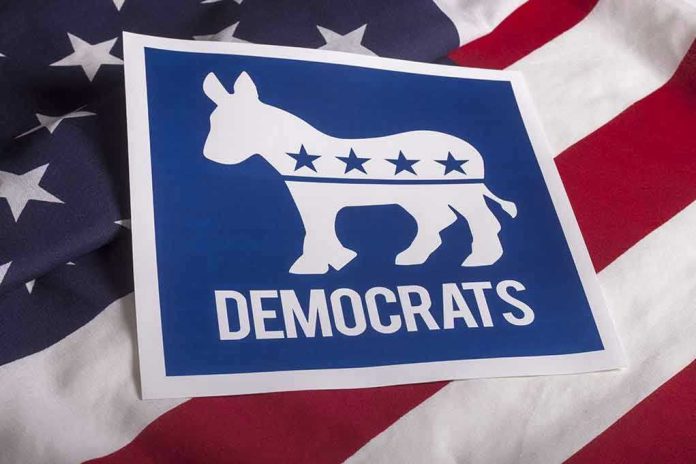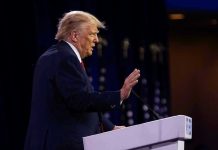
The Democratic Party’s leadership vacuum and radical transformation threaten to upend American political traditions, leaving conservatives deeply concerned about the future of constitutional values.
Story Highlights
- The retirement of establishment Democrats like Rep. Jerry Nadler marks a profound generational and ideological shift within the Democratic Party.
- Younger, more radical progressives are rapidly gaining power, openly challenging traditional norms and bipartisan cooperation.
- Internal conflict and loss of moderate voices have sparked warnings about threats to American democratic stability and values.
- Experts debate whether this is dangerous extremism or overdue reform, with evidence suggesting risks of alienating moderate voters and increasing polarization.
Radical Faction Rises as Democratic “Old Guard” Exits
The Democratic Party is undergoing a dramatic transformation as long-serving leaders such as Rep. Jerry Nadler step aside, ushering in a new era dominated by younger, more radical progressives. This shift, described as a “seismic” change by observers, is not just about generational turnover—it represents a deliberate move away from traditional party norms. The new leadership is increasingly defined by figures like Alexandria Ocasio-Cortez and Jasmine Crockett, who advocate for sweeping reforms on climate change, social justice, and economic policy, often at the expense of compromise and bipartisan cooperation. As the so-called “old guard” exits, the party’s structure and priorities are being fundamentally rewritten, with profound implications for American political life.
This internal revolution is not occurring in a vacuum. Over the past decade, polarization has intensified across American politics, especially following the Trump presidency. The Democratic Party’s coalition, once broad enough to accommodate both moderates and progressives, has fractured under the pressure of ideological purism and shifting national demographics. Key electoral defeats in 2024 accelerated demands for new leadership, emboldening activists who now seek to replace incremental reform with wholesale structural change. These developments echo past political realignments in U.S. history, but the current speed and intensity of the shift has left many traditional Democrats—and a broad swath of the electorate—deeply uneasy.
Internal Tensions and the Threat to Democratic Norms
With moderates losing influence, the balance of power is now tipping toward activist-driven factions that prize confrontation over consensus. Party unity is increasingly elusive, as public statements from both retiring moderates and ascendant progressives underscore deep divisions over policy and strategy. While progressives push for bold new agendas, polls show declining support among traditional Democratic voters, particularly older and moderate constituents who feel pushed aside. The risk, according to political scientists, is that rapid ideological changes may destabilize the party’s electoral coalition and undermine longstanding institutional norms—problems that could reverberate beyond party politics and threaten the fabric of American democracy itself.
Critics, including conservative commentators, warn that the new direction is not just a matter of policy disagreement but a structural upheaval. They argue that the party’s embrace of radical positions risks eroding constitutional protections, weakening checks and balances, and fueling further polarization. This perspective is shared by those who view the departure of leaders like Nadler as a loss of institutional memory and a dangerous opening for anti-establishment forces. However, some analysts counter that generational change is a natural part of political evolution, and that calls for reform reflect legitimate demands for broader representation and social justice.
Long-Term Implications: Polarization, Alienation, and the Future of American Politics
The immediate impact of the Democratic Party’s transformation includes heightened internal conflict and uncertainty about its ability to present a unified platform to voters. In the short term, this instability could lead to further electoral setbacks and a possible realignment of the party’s core base, with older and moderate voters feeling increasingly marginalized. Over the long term, the success or failure of this new direction will likely hinge on whether progressives can broaden their appeal beyond activist circles and reconnect with traditional constituencies—an outcome far from certain given current trends. The broader political landscape is also affected, as polarization deepens and bipartisan cooperation becomes ever more elusive, raising concerns about the resilience of democratic institutions and the health of American political life.
While some see opportunity in the party’s willingness to adapt, others caution that unchecked ideological zeal could undermine the very foundations of American governance. Academic research underscores the risks of rapid structural change without institutional safeguards, warning of potential democratic backsliding if established norms are disregarded. For conservatives, these developments serve as a stark reminder of the importance of vigilance in defending constitutional principles, individual liberty, and traditional values against the tide of radicalism and government overreach.
Sources:
We Should Be Very Afraid of What’s Happening in the Democratic Party – Instapundit
Is This What Made the Democratic Party So Radical? – PJ Media
We Should Be Very Afraid of What’s Happening in the Democratic Party – PJ Media
You Won’t Believe Who Democrats Think Can Save Their Party – Lucianne.com
Party Polarization and American Democracy – Annual Review of Political Science















